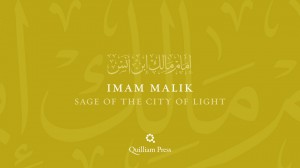The Four Caliphs of Islam- Shaykh Abdal Hakim Murad
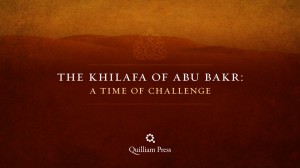 Video: The Khilafah of Abu Bakr: A Time of Challenge
Video: The Khilafah of Abu Bakr: A Time of Challenge
A far-sighted and deeply religious man, Abu Bakr al-Siddiq was the first adult free convert to Islam, and became a major narrator of Hadith and a fountainhead of spiritual wisdom. He also became the first Khalifa of the Holy Prophet Salla Allahu ‘Alayhi Wa Sallama . Facing rebellions by followers of false prophets, he reestablished the unity of Arabia under Islam. He became a byword for humble rulership. When he assumed the leadership he said: “If I am right, help me. If I am wrong, correct me. I shall strengthen the weak man among you until he enjoys his rights. I shall weaken the strong man among you until I have taken what is due from him. Obey me for as long as I obey Allah and His prophet; but if I disobey them, then disobey me.”
Video: The Khilafah of Umar: Days of Glory
Umar ibn al-Khattab, known as al-Faruq, ‘the Discerner’, was the second of the four Rightly-Guided Caliphs. One of the greatest rulers in world history, he laid down the institutions of a solid Muslim government. Under his farsighted leadership, armies moved in every direction to liberate neighbouring lands. Umar, may Allah be pleased with him, was passionate in his devotion to the Din of Islam and establishing Allah’s laws among His servants. He was also a man of prayer and fasting, who paid little attention to the temporary pleasures of the world. He said: ‘No part of Allah’s wealth is allowed to Umar, save two garments: one for the winter, and the other for summer, and what I need to take me to Umra and the Hajj. My provisions for my family are those of an ordinary man of Quraysh, neither the wealthiest nor the poorest. After that, I am just a man from among the Muslims.’
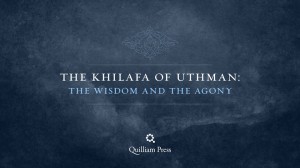 Video: The Khilafah of Uthman: The Wisdom and the Agony
Video: The Khilafah of Uthman: The Wisdom and the Agony
Uthman ibn Affan was the third Khalifa of Islam. He was known as the ‘Man of the Two Lights’, because he was the only man in history known to have married two daughters of a Prophet. Uthman was famed for his good looks and immense generosity, and also for his spiritual closeness to the Holy Prophet of Islam, who included him among the ten who were assured of Paradise. He commanded the armies of Islam during an age of miraculous conquest and victory in East and West. But he remained famously humble, and his sermons brought people to tears. He said: ‘I am astounded at four people: he who knows the world to be temporary, and still chases after it; he who is certain of death and yet makes no plans for it; he who believes in hell, and yet commits sins; and he who believes in Allah, and yet seeks the help of others.’
 Video: The Khilafa of Ali: The Mortal Choice
Video: The Khilafa of Ali: The Mortal Choice
Ali ibn Abi Talib was the fourth Khalifa of Islam. He had the distinction of being both the son-in-law and the cousin of the Holy Prophet, upon him be peace. He is, with Fatima, the ancestor of the Ahl al-Bayt, the People of the Prophetic House. He was characterised by martial skill, by inward depth, and by an immense erudition in religious knowledge. Of him, Imam Ahmad ibn Hanbal said: ‘Khilafa was not an ornament for him, he was an ornament for khilafa.’
Principles from the Lives of the Four Rightly-Guided Caliphs
Khulafa e Rashidun: The most exceptional era in human history in terms of virtue, justice, altruism, and ethics was the era of the golden age of Islam. It is called a golden age because Prophet Muhammad Salla Allahu ‘Alayhi Wa Sallama, whose inward spirit many Muslims understand as the original cause of creation, was alive in the world during that time. The spiritual power of the Prophet shaped the era in which he lived. And it was then possible for great numbers of ordinary people to encounter him regularly and to get to know him well. The people of that honored age emerged out of the darkness of violent ignorance and made their way to the civilization of peaceful virtue. Then they climbed the peaks of knowledge of Allah. Members of this community are therefore called the Venerable Companions of the Prophet. They were faithful to the Prophet in all matters. Read More…
The Four Imams of Islam – Shaykh Abdal Hakim Murad
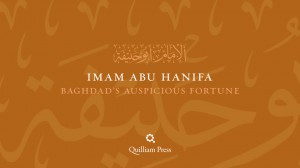 Video: Imam Abu Hanifa: Baghdad’s Auspicious Fortune
Video: Imam Abu Hanifa: Baghdad’s Auspicious Fortune
Imam Abu Hanifa an-Nu’man ibn Thabit (d. 767), the master-scholar of Iraq, was one of the four great Mujtahid Imams, after whom were named the four Madhhabs to which Sunni Muslims belong. A pupil of Imam Malik, he was celebrated for his intelligence, and his school is famous for its high opinion of the Divine gift of reason. In this the Imam was a faithful follower of the first generation of Muslims. According to many historians, he had the honour to meet several of the Companions of the Holy Prophet. His emphasis on rational approaches in law and theology, which went beyond even the method of Imam al-Shafi’i, did much to trigger systematic jurisprudence and theology in the Islamic world. Partly for this reason, a majority of Muslims in the world today are followers of his school.
 Video: Imam al-Shafi’i: The Worshipping Jurist
Video: Imam al-Shafi’i: The Worshipping Jurist
Imam Muhammad ibn Idris al-Shafi’i was perhaps the greatest legal theorist of human history. A pupil of Imam Malik, he strove constantly to root Muslim practice in the blessed ways of the Chosen One, upon him be peace. Thus he was honoured with the title ‘Nasir al-Sunna’, the Supporter of the Sunna. This emphasis on transmission was matched by his underlining the principle of aql, intellect, in solving problems of doctrine and law. A deeply-cultured human being, he was noted for his skill in archery and poetry, as well for his mastery of Sacred Law.
Video: Imam Malik: Sage of the City of Light
Imam Malik ibn Anas (d.795), celebrated as the ‘Imam of the City of Emigration’ (Imam Dar al-Hijra). Revered for his great love of the Sunna of the Chosen One (a.s.), Imam Malik dedicated his life to preserving the great treasure of Prophetic wisdom for future generations. As the honoured scholar of the City of Light, he knew that the Sunna was to be learned not only from the Hadith, but from the lived practice of the great people of Madina. His fiqh is therefore rooted in community practice, which gives it great flexibility and humanity. Close to many of the Second Generation (the Tabi’un), he narrated the famous ‘Golden Chain’: his own teacher Nafi had learned hadiths from Ibn Umar, who reported directly from the Holy Prophet himself. A sage who always made wudu before quoting a hadith, the Imam once remarked: ‘Allah places the gift of knowledge wherever He will. It does not consist in narrating a large amount.’
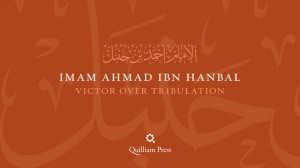 Video: Imam Ahmad ibn Hanbal: Victor Over Tribulation
Video: Imam Ahmad ibn Hanbal: Victor Over Tribulation
Imam Ahmad ibn Hanbal (d.855) was the fourth and last of the founders of the four Sunni Schools of Fiqh. Famous mainly as a narrator and compiler of Hadith, he was also widely respected for his knowledge of law, in which he preferred to avoid verdicts in which human reason was in danger of straying from the plain sense of the Qur’an and the Sunna. The hero of the Sunni persecution at the hands of the heretic caliph al-Ma’mun, he won the affection and respect of followers of all the rightly-guided schools of Islam.
Crash Course Of Islamic History – Shaykh Abdal Hakim Murad
Presented in Oslo on 18-19 March 2011; audio courtesy of Muhammad Hudayi.
Part 1: The narrative begins with the Divine statement, “We breathed into him something of Our Spirit,” describing Adam’s creation out of clay and having been given life. The deepest of all mysteries for modern philosophers as for theologians has been this puzzle of the lump of clay that has within it the Divine Spirit. Shaykh Abdal Hakim Murad asserts that as “significant history begins when human beings begin to perceive”, at that moment when the clay becomes ‘spiritualized’, one can say that history begins…
Audio Player
Part 2: Shaykh Abdal Hakim Murad explores some of the basic principles that need to be considered when examining the history of the umma (community) and what large lessons might be learned from it. In particular, he looks at those which can be described as ‘sharia-oriented’ or theological. Two of them in particular have been important to Muslims: How does power and statehood work? What is the role of the Muslim regarding political power: should one seek it? What should be one’s relationship to a ruler? The second is a theological issue: what is actually happening in history? Is history just a kind of puppet show? Is there a reality to cause and effect? And beyond that is the issue of destiny and providence. Is there a discernable pattern – God’s way of dealing with human beings – that can enable us to see history as something that has a religious significance and that can continue to teach us?
Audio PlayerPart 3: After presenting the background, Shaykh Abdal Hakim Murad points out that Islam does not appear out of a vacuum. He discusses the early story of Islam – when examining the inner history rather than the outward play of the rise and fall of dynasties – which can be characterized by three major themes:
- The polemic against the indigenous religion of the Arabs
- The argument against the earlier monotheisms
- Islam’s internal arguments
Part 4: This track begins with the story of the encounter between Prophet Muhammad and Christian scholar Waraqa ibn Nawfal and speculation regarding Waraqa’s reading the text in Hebrew. Murad continues with the first revelation, the first believers and the persecution of the early believers leading to the first emigration to Abyssinia.
Audio PlayerPart 5: Shaykh Abdal Hakim Murad discusses the Umayyads leading up to the Abbasid revolution and the fragmentation of the central states. He covers the Abbasid rule – which is for many historians the Golden Age of Islamic civilization – with the capital being moved from Damascus to Baghdad.
Audio PlayerPart 6: Eventually, the Abbasid caliph becomes a secondary figure, almost a symbol. Real power is increasingly in the hands of the body guards, the Imperial Guard and hence the figure of the vizier morphs into the figure of the Sultan. This process begins with the family of the viziers in the second and third centuries of their rule. More significantly, the emergence of the Seljuk’s (Turkish-speaking soldiers, military-types, administrators) begin effectively as rulers when they establish themselves as the real power in the land. Shaykh Abdal Hakim Muradleads up to the spread of Islam to the south and the north and the East, whereby the principle agent of Islamization seems to have been the tariqas.
Audio PlayerPart 7: Shaykh Abdal Hakim Murad examines the unanimity across the classical Islamic world despite the absence of an overriding body that could have forced conformity and delves into the question of the fate of local cultures. He argues that Islam’s capacity to maintain this balance between the universal and the particular is important and that this is a universal feature of Islamic history. Islam does not ‘Arabize’ despite the use of the Arabic language in worship and but instead ‘monotheizes’ local cultures.
Audio PlayerAn Introduction To Islamic History
A historical incident is just an isolated event that happens once and is never repeated again. If the researchers and historians all agree on the occurrence of one incident then surely their interpretation for its causes and motives will vary according to their different approaches. Each one will be impacted by his faith, his intellectual and cultural making, and his own perceptions to human life and the role of man in such an incident.
History is but a study for the events that occur or it could be the actual sum of all the events and incidents that occur. When we say events or incidents we are talking about any occurrence that takes place and results in changing the life of human beings while taking into consideration that any change occurring on earth is connected to the life of human beings. So if history is all about incidents and if incidents are all about change and change is the outcome of time; then history is none other but time. Read More…


